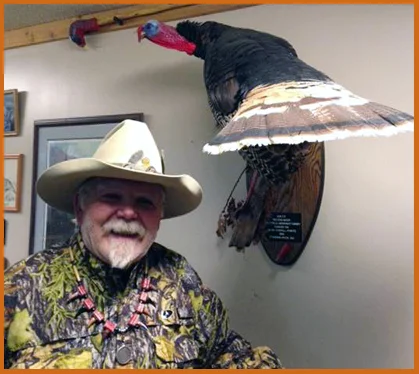The subject of calling at a wild turkey has been discussed extensively, and because it can be the most thrilling part of the hunt at times, I’m just as much a sucker for a different take on turkey calling as the next guy. We obsess over different vocalizations, learning how to do everything from kee-kees to fly-down-cackles, while searching endlessly for a new sound or call that will make a tom turn on his heel and come running. Through articles, TV, and video, we’ve been suckered into believing that the upcoming part of a conversation made between you, a fake hen, and him, a real tom, is more important than what you’ve said or haven’t said previously. Forget about the crackling yelps or brash clucks you previously butchered, the thought is always, “Well what if I hit him next with a round of glorious cutting?”
The truth, I’ve learned the hard way over the years, is that calling in a turkey can be as much about what you don’t say, and when you don’t say it than any kind of fancy forlorn calling sequences. Most close calls and successful hunts have a turning point; the part of the conversation where a bird comes near, but is still too far. At that point, critical decisions are made that more often break the hunt than make it, and so often the offending party is your calling decisions. Often they’re made too hastily, as a frantic last ditch effort that never had to be uttered.
Ever hunted with a buddy as they’re questioning your calling? “Hit him again” or “get on that box call” or “he’s walking away” are statements uttered as a matter of nervousness on the hunter’s part, more than they are as direct observations of what the turkey’s behavior is telling us.
With a bird that’s out of sight, we rely primarily on our sense of hearing to inform us, making the waiting game that much more challenging. Keep in mind that the bird often can’t see you either, and with each call he’s tightening your noose as a shrinking circle of certainty with which he has you pinned down. When he knows exactly where you are audibly, he doesn’t need to confirm that fact visually, further strengthening my own personal rule of not calling to a bird that’s actively closing the distance. So often, birds that “hang-up” are “hung-up” by hunters who call to a bird that’s walking right at them.
For birds in field or other open situations, it gets even more difficult. A traced path of any tom’s death march to the end of a gun barrel is full of jagged edges and zig-zags, especially if they’re strutting. As they pirouette, gobble, and walk, toms rarely head straight to you, even with decoys clearly visible. It gets almost too tempting to call at them when they’re spinning away from you, side-stepping, or otherwise not directly gobbling into your blind. The trick here is to enjoy the show, and through time and some experience, learn to read key clues on when they’re actually coming or going.
The double wing flip, observed as any turkey folds one wing back, and shortly thereafter another means one thing for certain, the bird will be taking a few steps. Hasty double wing flips, followed by a sharp angle away from you is a harsh reaction to something, while that same body language in any direction quartering or directly at you is a really good thing. Let the scene play-out, and realize that these birds may need some time to get comfortable with the thought of approaching.
If the best time to shut-up is when a bird is approaching, the next best time is when your calls continue to fall on deaf ears. Birds that gobble actively, just not at you, are telling you something without saying a word. They’re not liking something about your calling, whether it be cadence, tone, or frequency, or at the very least they don’t like the direction or area it’s coming from. Try changing up your calls, your calling, or your location to see if you can’t elicit a better response.
Another great time to bite your mouth call, is when feeding birds are marching across an expanse with cool and calculated determination. So often they’re heading to a hole in a fence or following a topographical feature like a natural drainage path. This is valuable information too, and if you can sneak around and out of sight to the area they’re heading, you’ll be ahead of the game. Even if you don’t get to their exact destination, the easiest turkey to call in is the one that already wants to be where you are. You’ll be amazed at how much more receptive they can be when you’re nearby or just past their area of interest.
Of course, I don’t mean to take away the fun of calling, as it really is one of the joys of turkey hunting. Learning to use it judiciously, and most importantly knowing when not to utter a sound, could be the best call you’ve got.
Photo Credit - Ben Brettingen














